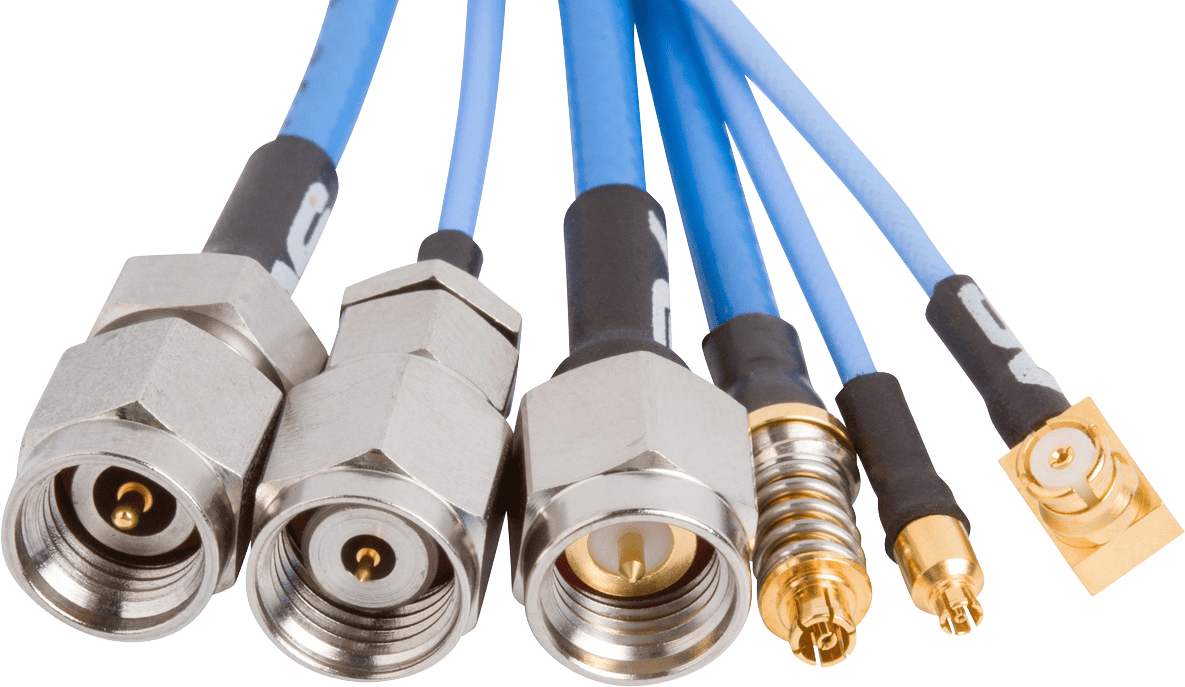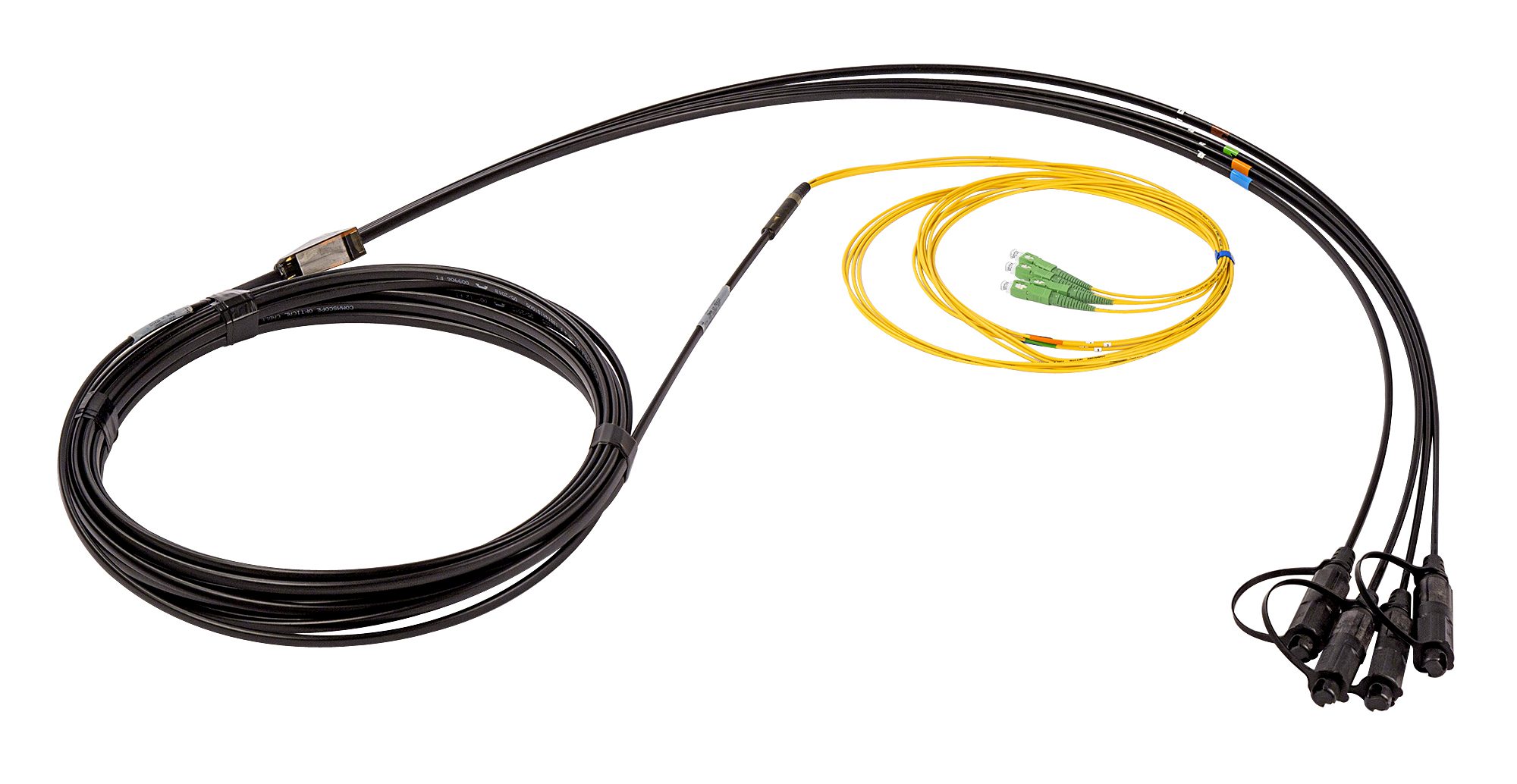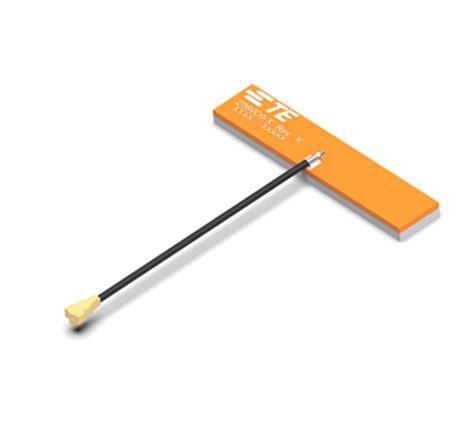Speed and Flexibility Key for Broadband Networks
The demand for bandwidth in residential areas during the pandemic has accelerated needed improvements to network infrastructures. Powerful cable, connectors, and antennas make it possible.

As offices, schools, and entertainment venues closed around the world due to the COVID-19 pandemic, broadband network infrastructure came under pressure as more people accessed the Internet for work, school, and leisure from new locations. Capacity needed to be quickly redirected from business areas to residential networks.
Currently, 52% of the workforce in the U.K. is working from home, compared with 5% in 2019. In the U.S., that figure is 42%. While many workplaces are eager to return to office life, at least a third of workers want to continue working from home, according to the Centre for Economics and Business Research (CEBR). This transition has caused businesses and municipalities to review their Internet and networking infrastructure and anticipate future demand. Continuing uncertainty means that network operators must design flexibility into their systems.

Amphenol SV Microwave provides RF cable assemblies through its Rapid Response service, enabling operators to expand and support broadband and telecommunications quickly as demand for high-speed equipment changes and grows.
One of the main complaints from internet users is image or audio lag on videoconferencing meetings, or poor latency. Latency issues range from annoying to disastrous for people trying to conduct a call with a customer or colleague, and for students trying to concentrate on a lesson. The reason for the latency is that most homes rely on broadband speeds of up to 25 Mb/s. The transition to working from home during the pandemic has meant that users are accessing the Internet during different times of day as well as sharing large files, using videoconferencing programs, and synchronizing and backing up files. These data-intensive activities require speeds of 50-100 Mb/s, placing new demands on the data.

CommScope’s fiber drop cable assembly solutions, available through Heilind Electronics, bring speed and flexibility to network deployments. Each factory-connectorized cable is designed to eliminate time-consuming field splices with plug-and-play ease of use.
Operators that made early investments in network infrastructure helped make the transition manageable. Immediate additional investments in hardware, including fiber to the home (FTTH) connectivity solutions and optical cables — including transatlantic cables — helped sustain what will be an ongoing demand for greater bandwidth.
Security Concerns
Customer data and company information must be kept secure, raising concern for companies that have transitioned to decentralized offices. But there may be a trade-off in productivity; firewalls for example, add a layer of security but also introduce latency.
“There can be quite a lot of overhead in different security protocols and security mechanisms,” said Ian Walter, sales director at Siklu UK, a company that provides mmWave solutions for wireless networks. “There is a lot of endpoint security, a lot of transfers and encryption. These are software-based, so depending on the levels of security that you need, the bandwidth requirements go up, and the network just has to increase to be able to cope with the additional security overlay.”

Siklu’s EtherHaul EH-1200FX 70/80GHz gigabit radios can be deployed in two days to provide interference-free connectivity and extend fiber networks in areas where rapid expansion is needed. They can be easily installed with up to four independent RF connectors.
Concentrated Efforts
Broadband providers are continuing to roll out fiber to the last mile — to reach homes with the “enterprise grade” speeds that were formerly available to businesses and homes but not required in homes. But it is a lengthy and expensive process. OpenReach, the UK’s largest digital infrastructure provider, is rolling out Gbit-ready full fiber broadband around the UK, connecting 20 million homes and businesses directly to the network. Figures for 2019, the latest available from the UK regulator, Ofcom, showed that approximately 8% of all UK premises have full fiber connection. Superfast broadband (30 Mb/s) remains the dominant speed. European countries tend to have populations highly concentrated in cities, making full fiber connection easier and less expensive. For example, Spain, where over half the population lives in apartments, has 63% full fiber coverage. Japan and South Korea lead the international table with coverage over 95%. Around the world, the transition to remote work has inspired some staff to move to rural areas where the surroundings may be idyllic but the Internet services are poor. Expansion of broadband networks is essential for those who live in these underserved areas.

TE Connectivity’s Wi-Fi 6E antennas can support triple bands, including 2.4 GHz, 5 GHz, and the new 6 GHz band. These robust antennas are ideal for access points/gateways/routers, smart cities and homes, WLAN and IoT devices, and Wi-Fi hotspots.
Bringing Gbit Home
Full fiber means replacing the decades-old copper systems located under roads and land with fiber optic cables directly to the household. At the moment, fiber only extends up to “the last mile” and the copper infrastructure carries the signal for the final leg. Replacing that final cable with minimal disruption has prompted the U.K. government to launch Project Gigabit, a £5 billion ($6.9 billion) scheme to find different ways to provide broadband access in hard-to-reach areas. Digging up roads and land is estimated to be 80% of the cost of building new Gbit-capable broadband networks, so the scheme is funding trials to feed fiber broadband cable through existing electricity, gas, and sewer networks. Any products destined for use in drinking water pipes will need to be rigorously tested before approval by the Drinking Water Inspectorate (DWI).
“Fiber is the future of digital communications. But it took over 100 years to build the legacy copper network, so replacing it with fiber won’t be easy,” said Stephen Unger, Commissioner at Geospatial Commission, one of the partners for the project.
“In the UK, houses are lucky if they get 100MB/s, said Walter. “WiFi networks are not equipped to work as a workspace.”
Both bandwidth and speed are needed to avoid latency, dropped or poor connection, overlaps or delays in audio. These, together with wait times for connection or routing, can reduce productivity levels. Antennas act as base stations to provide the last mile of connectivity in a fiber network. Facebook’s Terragraph Gbit technology provides up to 60 homes in an area with 1 Gbit access services. Each unit can connect up to 60 direct terminal units to deliver 1 Gbit/s into each house. It can potentially go up to 3 Gbit, said Walter. As well as crowded urban areas, it can bring Gbit speeds to rural areas without having to dig trenches to lay fiber.

Cinch Connectivity Solutions, a Bel group company, provides Ganged SMP Edge Mount Connectors in multi-port configurations operating to 40 GHz. These are suitable for LAN routers and base stations, phased array radar systems, microwave subsystems, and wireless infrastructure and antenna applications.
The hybrid model, blending remote and office work, is expected to continue beyond the pandemic. Strengthening broadband infrastructure will be an ongoing necessity.
Like this article? Check out our other Networking, and Fiber Optics, and our Datacom/Telecom and Sensors & Antennas Market Pages, and our 2021 Article Archives.
Subscribe to our weekly e-newsletters, follow us on LinkedIn, Twitter, and Facebook, and check out our eBook archives for more applicable, expert-informed connectivity content.
- Matter: A Show of Unity for Connectivity - September 5, 2023
- Brexit Update: UK Connector Industry - March 28, 2023
- Sensors Make it Plain Sailing for a Smart Ferry - February 21, 2023





